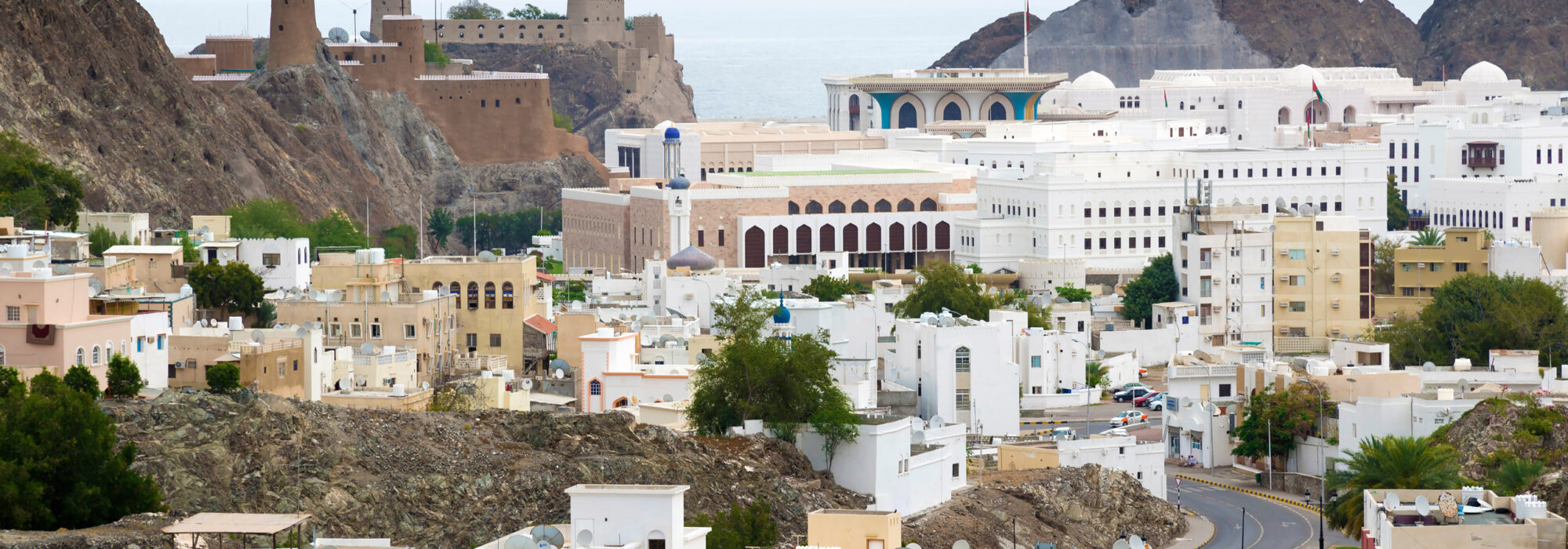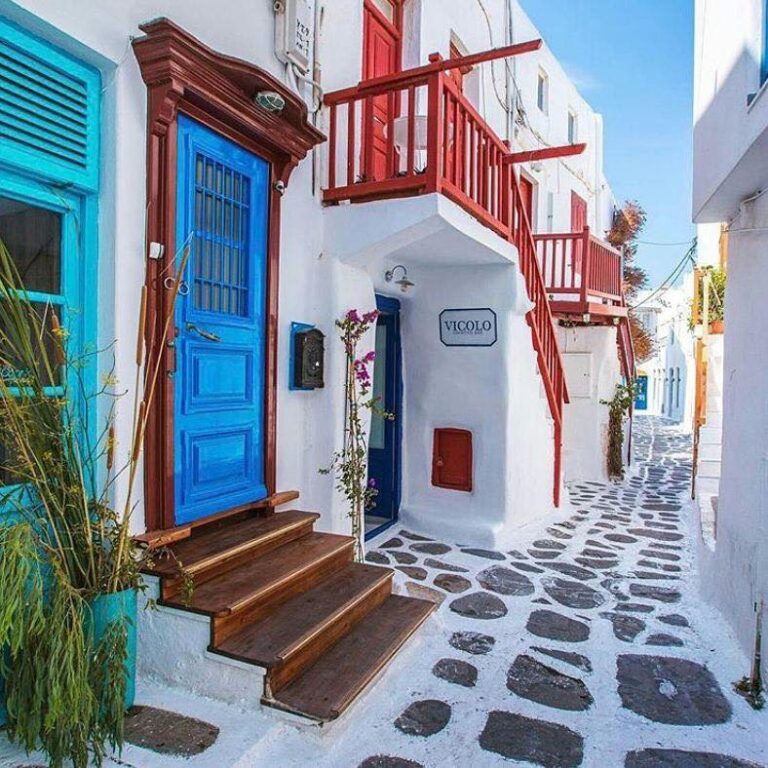
Oman's capital, Muscat, lies on the Gulf of Oman coast. It is not one city but rather a combination of three urban areas and a number of districts strewn over 80 sq mi/130 sq km. Because of the hills scattered throughout the area, the three towns have remained distinct entities.
The chief city, sometimes called Old Muscat, is set on a beautiful, crescent-shaped bay. Behind Muscat, jagged mountains form a lovely, although stark, backdrop. The Old Town area, known as Mutrah, is a small port enclave with forts perched on hilltops, narrow streets and a lovely souk, or bazaar, where traders offer myriad goods, from fabrics to jewelry, spices, old guns and other weapons.
Oman's ruler, Sultan Qaboos bin Said, has an "office" palace at Mutrah, surrounded by buildings of the royal court and other government structures. The palace where he resides is located farther along the coast.
Muscat is distinguished by many mosques, including the Grand Mosque. Built by the sultan and named for him, it is a marvelous building set on extensive grounds with lovely trees and flowers and a glorious marble courtyard. The enormous interior contains a one-piece prayer mat; huge chandeliers; and intricate, delicate and colorful inlay work on the walls and ceiling.
For visitors who want to learn more about the history of Oman, the exhibition at the Armed Forces Museum in Muscat presents it in fascinating detail. Note that most museums are not open on Thursday, and mosques are closed to non-Muslim visitors after 11 am on Friday.
Despite the boom, development in Muscat is strictly controlled, with no tall buildings dominating the skyline. Buildings are constructed to ensure harmony with heritage attractions. A new opera house is nearing completion, and upgrades are well under way at the international airport, which is located quite close to the city.
Be sure to see Alam Palace, Zawawi Mosque and the Portuguese-built forts of Mirani and Jalai (only the exteriors of Jalai can be viewed). Bait Al Zubair Museum, near the harbor, is the capital's best one-stop introduction to Omani history, customs, arts and craftwork. Note the arched doorways on houses and buildings as you stroll around. Within a half-hour's drive are nice beaches.
The Matrah fort is still in use and is closed to the public. Be sure to walk along the Corniche, and at its eastern end, climb the watchtower for a nice view.
Ruwi is the only inland district of the capital area. The commercial headquarters of the nation, Ruwi is the focus of most business trips to the capital. It has a nice strip of stalls and shops along its modern main street. Attractions include the National Museum and the Sultan's Armed Forces Museum (inside the Bait al-Falaj fort), which offers an overview of Oman's military history.
Continuing west along the coast, you'll soon find yourself in the residential area known as Madinat Qaboos, home to the Oman Museum and the interesting Natural History Museum (it's next door to the Ministry of Culture, where permits can be obtained to visit the country's archaeological sites).
Farther west, en route to the airport, is the Sultan Qaboos Grand Mosque. Morning tours are open to all, Muslim or not. Southwest of Muscat on the road to Sur is the fertile Wadi Daiqah Gorge, one of the few wadis, or river valleys, that has water year-round. This scenic spot is a great place for a picnic.
Along the east side of the city, the road connecting the Al Bustan Hotel and the Muscat Dive Center offers spectacular, other-planetary scenery and amazing coastal views. If you take a taxi tour of the city, be sure to have your driver take you down this stretch of road.
Muscat boasts numerous hotels. The Crowne Plaza and InterContinental overlooking the Gulf are popular with tourists, while the excellent Park Inn, closer to the airport, caters to both tourists and businesspeople. New resort spas, such as Barr al Jissah, offer relaxation and private beaches, and there are water-based activities such as snorkeling, scuba diving and dolphin-watching tours.
Location
Muscat's small but busy industrial port faces the old town, so travelers are afforded a beautiful view of the city and mountains as they enter the city. Free shuttle buses are provided to take passengers from the ship to the port gate. From there, the old town along the waterfront is easily explored on foot.
Taxis are available at the port entrance. It is easy, and advised, to arrange private tours in advance.


































